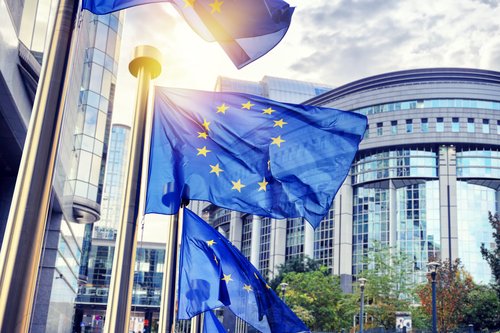Brussels (Brussels Morning) The European Parliament has defended the use of renewable hydrogen and energy sector integration, in furthering efforts to curb carbon dioxide emissions and achieve the climate change targets set by the EU.
On 22 March, MEPs on the Industry, Research and Energy committee (ITRE) adopted two reports that propose measures to boost the decarbonisation of Europe’s energy system, industry and transport sectors. The reports constitute responses to the European Commission’s hydrogen and energy system integration strategies.
Hydrogen produced from renewable sources is key to Europe’s energy transition as only renewable hydrogen can contribute sustainably to achieving climate neutrality in the long term, MEPs maintain.
However, the ITRE Committee noted that hydrogen is not yet competitive and concluded that the Commission and member states should incentivise the value chain and market uptake of the fuel, when produced from renewable energy sources.
Classifying hydrogen
Hydrogen can be produced in many colours, yet the most common are green, blue or grey.
Green hydrogen is made with renewable electricity via electrolysis. It is envisaged as the key catalyst to ensure a revolutionary shift in the 21st century towards addressing vital environmental questions.
Blue hydrogen is produced mainly from natural gas using a process called steam reforming, a marriage of natural gas and heated water in the form of steam. The result is hydrogen and carbon dioxide, with the latter then caught through industrial processes like carbon capture and storage.
During the 22 March debate, MEPs stressed the need for a classification of the different types of hydrogen. “A rapid agreement on a uniform, EU-wide terminology is necessary, and the distinction should be made absolutely clear between renewable and low-carbon hydrogen”, they concluded.
“How long blue hydrogen is used I really cannot say because I’m not a prophet. It depends on a lot of circumstances that we can only influence politically to some extent”, MEP Jens Geier (S&D) opined.
Sector Integration
An overwhelm majority of MEPs (60 votes to 11 with 5 abstentions) pushed for the sector integration of energy systems as a way of improving energy efficiency and reducing costs for society. This means a fully integrated system, combining renewable energies as well as related appliances in view of the need to optimise the existing energy infrastructure.
MEPs maintained that the twin green and digital transitions of the energy networks would require unprecedented public and private investment in order to modernise infrastructure and promote new infrastructure development, in addition to the need for investments in buildings renovation and R&D.
“This report proposes serious options for achieving our objectives: accelerating decarbonisation, ensuring the balance of networks, building interconnections, facilitating the deployment of renewables, developing digitalisation, and extending storage and local production,” MEP Christophe Grudler (Renew) declared.
Despite views to the contrary expressed by MEPs, associations like the European Alliance to Save Energy (EU-ASE) insisted that hydrogen should not be used as a heating source for buildings in the EU.
“The efficiency factor between green hydrogen and competitive technologies is so large that hydrogen is not a viable option when it comes to heating in buildings, Monica Frassoni of the EU-ASE said. “It takes about five times more wind or solar electricity to heat a home with hydrogen than it takes to heat the same home with an efficient heat pump”, she observed.




